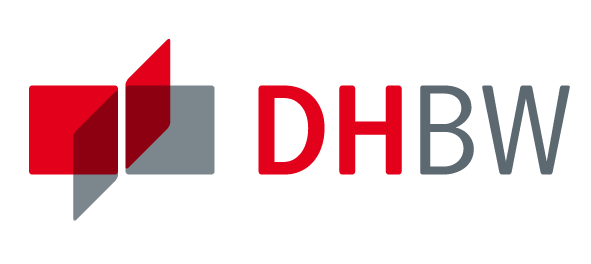Publikationen der DHBW Karlsruhe
2024
2023
-
(2023) : Investigating Transparency Dimensions for Internet Voting In: Volkamer, Melanie; Duenas-Cid, David; Rønne, Peter; Ryan, Peter Y. A.; Budurushi, Jurlind; Kulyk, Oksana; Pérez, Adrià Rodriguez; Spycher-Krivonosova, Iuliia (Hg.): Electronic Voting: Proceedings: 8th International Joint Conference, E-Vote-ID 2023: Luxembourg City, Luxembourg: October 3–6, 2023: 1: Cham: Springer (Lecture Notes in Computer Science), S. 1-17
-
(2023): Organisationale Erfolgsmuster für digitale Geschäftsmodellinnovation. Maßgeschneiderte Impulse aus der Praxis für Ihren Unternehmenserfolg. In: ERFOLGSMUSTER DER DIGITALEN TRANSFORMATION 2023 (Januar 2023). Online verfügbar unter https://www.karlsruhe.dhbw.de/fileadmin/user_upload/documents/content-de/Studiengaenge-Wirtschaft/BWL-Digital-Commerce-Management/Organisationale_Erfolgsmuster_fuer_digitale_Geschaeftsmodellinnovation_Kurzfassung_deutsch.pdf
-
(2023) : Chancen und Gelingensbedingungen für das Arbeiten mit Fragenpools In: Hufnagel, Julia; Ternes, Doris; Schnekenburger, Carsten (Hg.): Aufbau eines Education Competence Networks: Lehre und Lehrsupport digital und nachhaltig denken: Heilbronn (#DUAL: ZHL-Schriftenreihe für die DHBW), S. 105-120. Online verfügbar unter https://www.zhl.dhbw.de/fileadmin/user_upload/CAS-ZHL/Hochschuldidaktik/Schriftenreihe_DUAL/ZHL_Schriftenreihe_Dual_Band_6.pdf#%5B%7B%22num%22%3A1754%2C%22gen%22%3A0%7D%2C%7B%22name%22%3A%22XYZ%22%7D%2C-303%2C595%2C1.22%5D
-
(2023): Nach Brexit mehr Einwanderung nach Großbritannien in einigen Branchen. Zu wenig EU-Personal in Gastronomie und Landwirtschaft, knappes Gemüse und Staus – üblicherweise fällt der Brexit mit negativen Folgen auf. Aber es gibt seltene Ausnahmen.. Interview mit Prof. Dr. Andrew Lee. In: Handelsblatt Online. Online verfügbar unter https://www.handelsblatt.com/politik/international/arbeitskraefte-nach-brexit-mehr-einwanderung-nach-grossbritannien-in-einigen-branchen/29085344.html
-
(2023) : Förderung der Selbstlernkompetenz Studierender als nachhaltiges Lehrkonzept In: Education Support Center (ESC) DHBW Mannheim: Nachhaltigkeit in der Lehre Präsidium der DHBW, DHBW Karlsruhe, DHBW Mosbach und das ZHL: Tag der Lehre 2023 an der DHBW Mannheim am 21.09.2023: DHBW Mannheim, Hans-Thoma-Str. 40 (Gebäude E): 21.09.2023 von 09:00 Uhr bis 17:00 Uhr. DHBW Mannheim (Tag der Lehre)
-
(2023) : Projekt "Digitainability": Future Skills für eine nachhaltige Zukunft im Studium erwerben In: Education Support Center (ESC) DHBW Mannheim: Nachhaltigkeit in der Lehre Präsidium der DHBW, DHBW Karlsruhe, DHBW Mosbach und das ZHL: Tag der Lehre 2023 an der DHBW Mannheim am 21.09.2023: DHBW Mannheim, Hans-Thoma-Str. 40 (Gebäude E): 21.09.2023 von 09:00 Uhr bis 17:00 Uhr. DHBW Mannheim (Tag der Lehre)
-
(2023) : KI gestützt arbeiten: Potenziale & Herausforderungen. Vortrag & Workshop In: Coworking Nürnberg: Frauen sprechen über coole Dinge: Also AI, Coding, Leadership, oder Unternehmensführung: Digital Women Day: Coworking Space Nürnberg: Mittwoch, 05. Juli 2023 ab 09 Uhr
-
(2023): Der englische Patient – Krönung im Krisen-Reich. Interview mit Prof. Dr. Andrew Lee. Wiesbaden, 2023. Online verfügbar unter https://www.hr-inforadio.de/podcast/das-thema/der-englische-patient--kroenung-im-krisen-reich,podcast-episode-118366.html
-
(2023): Risiko, Ertrag - Paris Alignment?. Ansatz für die Berücksichtigung von Klimawirkungen in der Portfolio-Allokation institutioneller Investoren. In: Zeitschrift für das gesamte Kreditwesen, S. 70-76. Online verfügbar unter https://www.kreditwesen.de/kreditwesen/themenschwerpunkte/aufsaetze/risiko-ertrag-paris-alignment-klimawirkungen-portf-id85328.html
-
(2023) : Multidimensional challenges for older prisoners. Being imprisoned when old presents a double burden to this vulnerable group. Researchers from Germany have investigated their situation and challenges from different perspectives. Project Overview In: Ciobanu, Oana; Turek, Konrad; Lee, Sunwoo; Bote, Marcos (Hg.): Ageing in Europe (Newsletter of the ESA Research Network on Ageing in Europe (RN01)). Online verfügbar unter https://www.europeansociology.org/media/09a47afc-8167-4790-916c-a26188ec67c1
-
(2023) : Gestaltung von Selbstlernphasen zur Förderung von Student Engagement In: Buchner, Josef; Freisleben-Teutscher, Christian F.; Hüther, Judith; Neiske, Iris; Morisse, Karsten; Reimer, Ricarda; Tengler, Karin (Hg.): Proceedings Inverted Classroom and beyond 2023: Agile Didaktik für nachhaltige Bildung: Norderstedt: Books on Demand GmbH, S. 116-129. Online verfügbar unter https://www.fnma.at/content/download/2684/16177
-
(2023): Vier-Tage-Woche?. CONTRA »Ob dies für die Beschäftigten vorteilhaft wäre, hängt sehr vom Unternehmen und von der Führungsebene ab.«. In: Altenpflege 48. Jahrgang (05.2023). Online verfügbar unter https://www.karlsruhe.dhbw.de/fileadmin/user_upload/documents/content-de/Einrichtungen/Oeffentlichkeitsarbeit/Anhaenge-Veranstaltungen/AP_4_2023_Pro_und_Contra.pdf
-
(2023) : Future Skills in einer KI geprägten Welt:. Ergebnisse der baden-württembergweiten Studie "AI Comp" zu einem KI-Kompetenzrahmen. Workshop In: Wengler, Katja; Reichardt, Dirk; Pfisterer, Dennis (Hg.): Proceedings: DHBW AI Transfer Congress 2023: Heilbronn, Germany: September 29th, 2023. Cooperate State University Baden-Wuertemberg: Stuttgart: Dualen Hochschule

